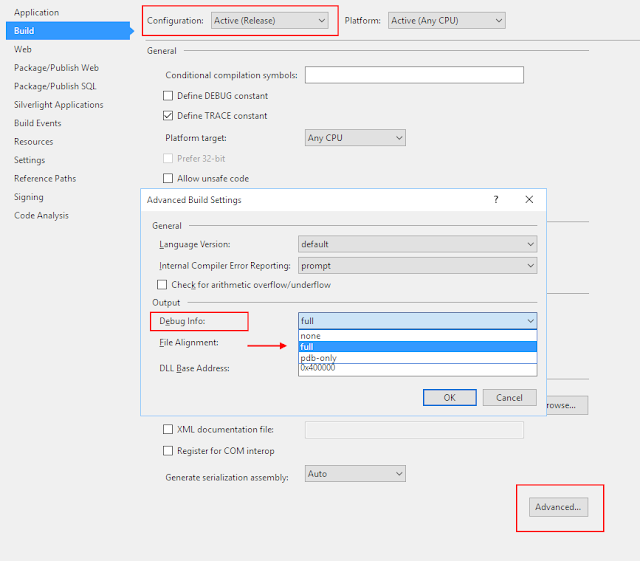Get Line Numbers In Exception Stack Trace

If you want to ensure you get line numbers in your Exception Stack Trace, you need to make sure your project is set up to provide "full" debug info on build. By default, for "Release" configuration, this is set to "pdb-only". Steps to enable: In Visual Studio... 1. Ensure your project is set to "Release" Solution Configuration (or whichever config you use for deployments) 2. Go to Project > Properties > Build 3. Click the Advanced Button in the bottom right. 4. Under Output > "Debug Info", choose "full" from the dropdown. 5. Save all settings and build your project. You will now see line numbers in Exception Stack Traces. Hope this helps, Aaron
